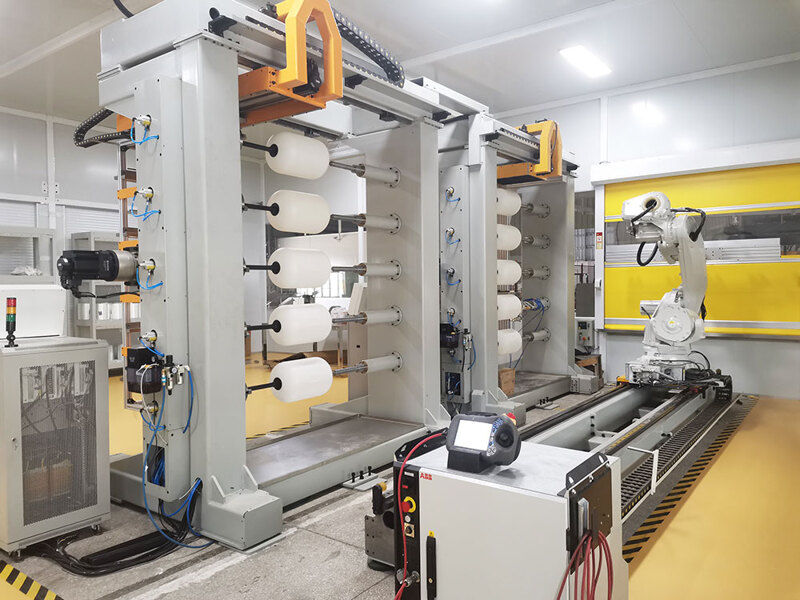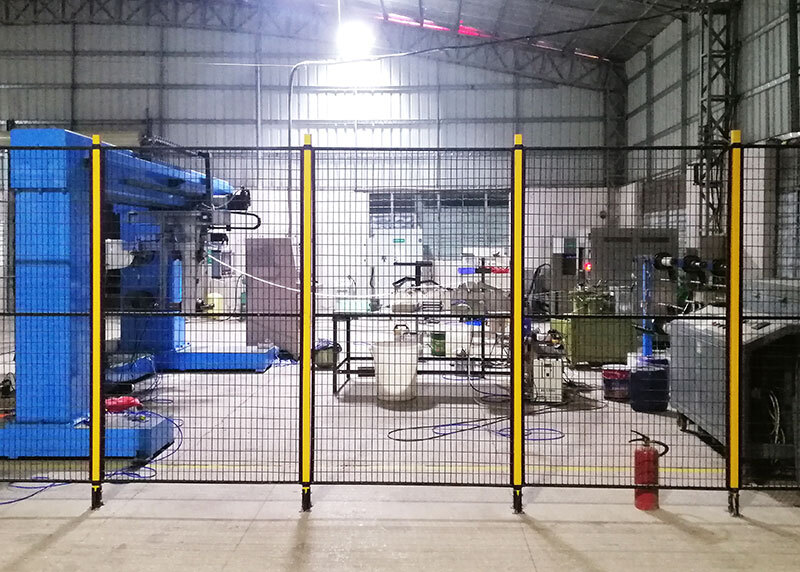Are you looking for a filament winding machine? Having trouble deciding what type, materials, and software to use? Below you will find our small guide to help you select the right machine. This article discusses the process itself and the key factors to consider before making a significant decision.

Filament winding is a complex and precise manufacturing process where continuous fibers are impregnated with resin and wound onto a mandrel to produce tanks, pipes, pressure vessels, and other round-form products that require a high degree of structural integrity. This process is used to make tubular parts like rocket bodies, pressure vessels such as compressed air or gas tanks, suspension components in auto racing, and even refueling aircraft in flight. Its ability to adapt to changing fiber orientations makes it ideal for creating custom lightweight composite structures engineered to target different strengths.
Now that you know about the technology, the next step is to consider the important buying factors. Here are some key points to keep in mind:

Purpose and Application
Determine the specific purpose for which you need the filament winding machine. Understand the application requirements, such as the type of products you intend to manufacture, the materials you’ll be using, and the production volumes you expect. This will help you select a machine that aligns with your specific needs.
For example, if you need large capacity production output for CNG, H2, or LPG tanks probably you should consider a multi-spindle filament winding machine. It can wind from 2 up to 5 spindles simultaneously. In automated filament winding lines, if you want to be more economical and have fast operator interactions, you use pneumatically driven chucks for an automatic clamping system. Also, these multi-spindle machines have a double-drive carriage system that ensures the stability and the movement of the carriage axis is increased, and any shaking of the delivery eyes is eliminated. If you need a machine for product development where you can run different trials, you probably need a single spindle portal configuration.
Machine Specifications
Consider the technical specifications of the filament winding machine. Pay attention to parameters like the maximum winding diameter, maximum length, number of axes, winding speed, and tension control capabilities. Ensure that the machine specifications meet your production requirements and are compatible with the materials you plan to use.
For example, if you need to produce large composite parts up to 4m in diameter, you need Floor-bed and a heavy-duty unit. If you use towpreg material, you probably need 5 axes of control, for complex parts you may need more, like 6 axes of motion. Towpreg can be up to 2.5 times faster than wet filament winding. Winding speed can be over 5 meters per second, and a wide range of winding angles is possible. If you want to reduce operator interaction more, HaiKong provides also its own patented and proven technology for automated starting, cutting, and restarting (CRS) of fibers on the winding program.
Material Compatibility
Filament winding machines can work with a variety of materials, including carbon fiber, fiberglass, Kevlar, and other composite materials. Verify that the machine you’re considering can handle the specific materials you intend to work with effectively. It should have the necessary features, such as resin delivery systems, to accommodate your materials.
For example, the first thing you should know is do you want a wet or dry (towpreg) winding machine. If you need a wet filament winding machine, you need a resin impregnation bath possibly with a resin mixing system for high automation. On the other hand, towpreg winding process requires special adjustments to the fiber creel and delivery eye. Compared to traditional wet filament winding, the towpreg process can make the workplace cleaner, as there is no wet resin, and safer, as prepreg exhibits little to no emission of volatile off-gassing compounds (VOCs), and thus does not expose operators to hazardous volatile chemicals. For multi-spindle machines, our resin baths have a programmable doctor blade for the resin pick-up set. HaiKong solution provides that each of the fiber tapes that goes to different spindles can have individual and programmable resin pick-up adjustment. This is very important for the quality of the process, especially where each spindle has a different angle of the fibers coming from the resin bath.

Automation and Control
Determine the level of automation and control required for your production process. Some machines offer manual control, while others are equipped with advanced automation features. Consider factors like ease of programming, operator interface, and the ability to customize winding patterns. Depending on your needs, you may opt for a more automated machine or one that allows for greater manual control.
Production Capacity
Evaluate the production capacity of the machine. Consider factors such as the number of spindles or mandrels, the winding speed, and the ability to handle multiple winding operations simultaneously. Ensure that the machine can meet your production volume requirements without sacrificing quality or efficiency.
For example, if you are a producer of LPG tanks and you need to produce 300,000 – 1,000.000 units per year, a couple of multi-spindle machines with automation can suffice. However, for CNG and CHG tanks, with longer winding cycles, consider at least several winding machines with supporting units for handling to achieve maximum effectiveness.
Quality and Precision
Filament winding involves creating complex structures, so it’s essential to choose a machine that can achieve the required level of quality and precision. Look for features like accurate tension control, programmable winding patterns, and reliable mandrel rotation. Consider the machine’s track record, reviews from other users, and any certifications or standards it complies with.
Assess the availability of technical support and maintenance services from the machine manufacturer. Filament winding machines can be complex, so having reliable support and maintenance resources can be crucial. Ensure that the manufacturer offers training, documentation, spare parts availability, and responsive customer service.
For example, HaiKong provides installation, training, and service support for its customers 24/7.
Evaluate the cost of the machine and compare it to the potential return on investment. Consider not only the initial purchase cost but also factors like operational costs, maintenance expenses, and the expected lifespan of the machine. It’s important to strike a balance between affordability and long-term value.
Filament winding machines involve various safety considerations. Ensure that the machine adheres to relevant safety standards and regulations. Look for safety features such as emergency stop buttons, protective enclosures, and proper ventilation systems.
When you carefully consider these factors, you will be able to make an informed decision and select the filament winding machine that will meet your specific needs. Whenever you need help with your selection, the HaiKong team is available to assist.
HaiKong is one of the most innovative solution providers for filament winding machines. All units have state-of-the-art capability, flexibility, and reliability built-in. Our machines have proven quality, continuous improvements, and many innovations.
Review our wide range of filament winding equipment or check out our solutions for fully automated turn-key plants.
Email : sales@hkfhcl.com
Tel : +86 13325126331
WhatsApp : +86 13325126331
Add :No. 2877 Shengfu Road, Shengjing Street, Zhangqiu District, Jinan, Shandong, China
